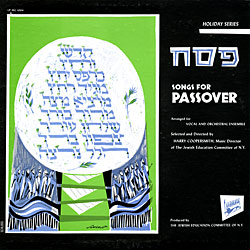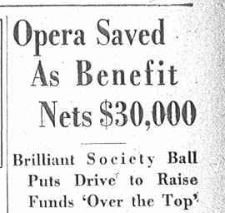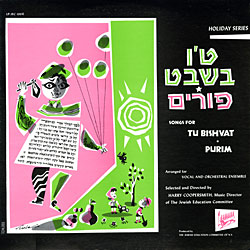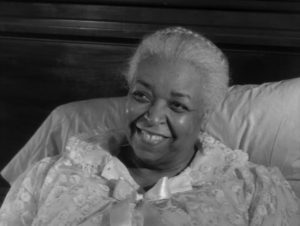 Looking for music to enjoy with family and friends this Passover? Here at the Recorded Sound Archives at FAU Libraries, we would like to highlight the voices of Cantor Michael Kyrr, Cantor David Unterman and Joan Mey a few artists out of several available in the Passover Collection off the album, Songs for Passover.
Looking for music to enjoy with family and friends this Passover? Here at the Recorded Sound Archives at FAU Libraries, we would like to highlight the voices of Cantor Michael Kyrr, Cantor David Unterman and Joan Mey a few artists out of several available in the Passover Collection off the album, Songs for Passover.
This album was produced by the Jewish Education Committee of New York, in 1965 and was compiled by Harry Coopersmith to help engage youngsters in the customs and traditions of the Jewish religion. These recordings reflect a time in American history when Conservative Jewish educators sought to spirtually bind Jews together through song. Read More About This…
 Did you know that in 1933, Lucrezia Bori began a career as a fundraiser for the Metropolitan Opera during the Great Depression on top of performing?
Did you know that in 1933, Lucrezia Bori began a career as a fundraiser for the Metropolitan Opera during the Great Depression on top of performing?
Retiring, later that she wanted at age 48, Lucrezia Bori helped save the Metropolitan Opera. While the Metropolitan continued to sell tickets to performances with no difficulty despite the Great Depression. The contributions of its stockholders fell off dramatically and by the end of 1932 the board of directors found that a great deal of money would be needed if the next season were to be held. Read More About This…
 Looking for music to enjoy with family and friends this Purim? Here at the Recorded Sound Archives at FAU Libraries, we would like to highlight the voices of William Wolff and Joan Mey one of several artists available in the Purim Collection off the album, Songs for Tu Bishvat and Purim.
Looking for music to enjoy with family and friends this Purim? Here at the Recorded Sound Archives at FAU Libraries, we would like to highlight the voices of William Wolff and Joan Mey one of several artists available in the Purim Collection off the album, Songs for Tu Bishvat and Purim.
This album was produced by the Jewish Education Committee of New York, in 1965 and was compiled by Harry Coopersmith to help engage youngsters in the customs and traditions of the Jewish religion. These recordings reflect a time in American history when Conservative Jewish educators sought to spirtually bind Jews together through song. Read More About This…
 Looking for music to enjoy with family and friends this Passover? Here at the Recorded Sound Archives at FAU Libraries, we would like to highlight the voices of Cantor Michael Kyrr, Cantor David Unterman and Joan Mey a few artists out of several available in the Passover Collection off the album, Songs for Passover.
Looking for music to enjoy with family and friends this Passover? Here at the Recorded Sound Archives at FAU Libraries, we would like to highlight the voices of Cantor Michael Kyrr, Cantor David Unterman and Joan Mey a few artists out of several available in the Passover Collection off the album, Songs for Passover.


